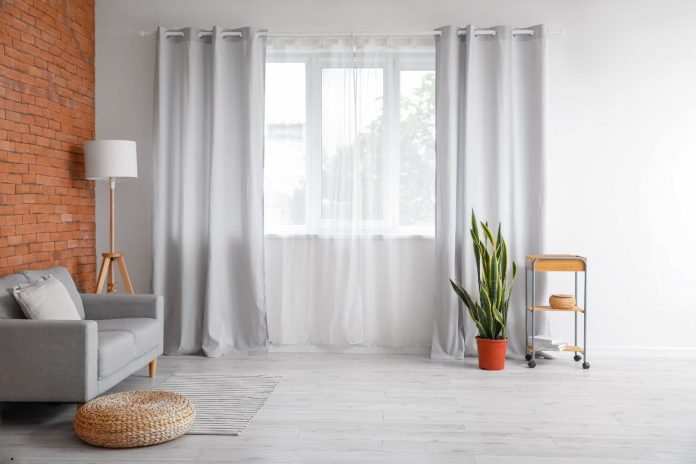In modern architecture, the choice of façade systems is crucial in defining the aesthetic appeal, functionality, and performance of a building. Two popular façade options are curtain walls and window walls. Each serves distinct purposes and offers unique benefits, making them suitable for different applications. In this blog, we’ll explore the key differences between curtain walls and window walls, their respective advantages, and how to choose the right system for your project.
What is a Curtain Wall?
Definition and Structure
A curtain wall is a non-structural exterior wall system that is typically attached to the building’s structural frame. Unlike traditional walls that support the weight of the building, curtain walls act primarily as a protective layer that encloses the building. They are usually made of lightweight materials such as aluminum, glass, or composite panels.
Design and Aesthetics
Curtain walls offer a sleek, modern appearance, often characterized by their expansive glass surfaces. This design allows for uninterrupted views and maximizes natural light penetration, creating a bright and open interior environment. The continuous glass façade also contributes to a building’s contemporary look, making it a popular choice for high-rise buildings and commercial spaces.
Performance and Efficiency
Curtain walls are engineered to handle environmental factors such as wind loads, thermal insulation, and water penetration. They can be customized to include features like double-glazing or low-emissivity coatings, enhancing energy efficiency and contributing to a building’s sustainability. Additionally, curtain walls provide effective weather protection and can help reduce noise pollution from external sources.
What is a Window Wall?
Definition and Structure
A window wall, also known as a ribbon window or continuous window, is a vertical window system that typically spans the height of multiple floors or the entire height of a single floor. Unlike curtain walls, window walls are often integrated into the building’s structural frame, with each window unit being individually installed.
Design and Aesthetics
Window walls offer a distinctive look with horizontal or vertical bands of glass that break up the façade’s surface. This design allows for large expanses of glass while maintaining structural integrity. Window walls are commonly used in residential buildings, apartment complexes, and mixed-use developments, providing occupants with expansive views and natural light.
Performance and Efficiency
While window walls do not provide the same level of environmental protection as curtain walls, they can still offer significant energy and performance benefits. Window walls can be equipped with energy-efficient glazing and thermal breaks to improve insulation and reduce heat loss. They also allow for flexible design options and can be combined with other façade systems to enhance overall building performance.
Key Differences Between Curtain Walls and Window Walls
1. Structural Integration
The primary difference between curtain walls and window walls lies in their structural integration. Curtain walls are non-load-bearing systems that are attached to the building’s structural frame, while window walls are often integrated into the structural framework and may contribute to the building’s load-bearing capacity.
2. Coverage and Continuity
Curtain walls cover entire building elevations, creating a continuous, seamless façade. In contrast, window walls are typically installed as segmented units or bands of windows, which can create visual breaks in the façade but provide a more segmented appearance.
3. Installation and Maintenance
Curtain walls are generally installed as pre-fabricated panels that are mounted onto the building’s structure, which can streamline the installation process. Window walls, on the other hand, require the installation of individual window units, which can be more time-consuming and may require additional maintenance.
4. Design Flexibility
Both systems offer design flexibility, but in different ways. Curtain walls provide a modern, uninterrupted glass surface that can be customized for various aesthetic and performance requirements. Window walls offer design options with horizontal or vertical bands of glass, allowing for a more segmented appearance and flexibility in design.
Choosing the Right System for Your Project
The choice between a curtain wall and a window wall depends on several factors, including the building’s design goals, performance requirements, and budget. For high-rise buildings or commercial projects seeking a sleek, modern appearance and superior environmental performance, curtain walls are often the preferred choice. For residential or mixed-use developments where a segmented window design is desired, window walls may be more suitable.
Consider the following factors when making your decision:
- Aesthetic Preferences: Determine whether you prefer the continuous glass façade of a curtain wall or the segmented look of a window wall.
- Performance Requirements: Evaluate the building’s need for thermal insulation, weather protection, and energy efficiency.
- Budget and Installation: Assess the costs associated with each system, including installation and long-term maintenance.
Conclusion
Both curtain walls and window walls offer distinct advantages and can play a crucial role in the design and performance of a building. By understanding the key differences and benefits of each system, you can make an informed decision that aligns with your project’s goals and requirements. Whether you opt for the sleek, modern look of a curtain wall or the segmented elegance of a window wall, both systems provide valuable solutions for enhancing the aesthetic and functional aspects of contemporary architecture.








